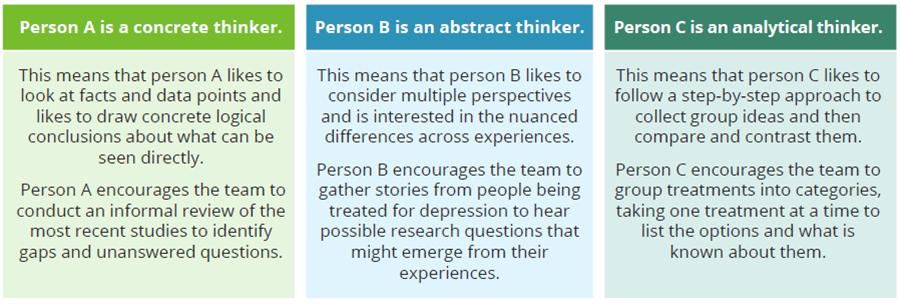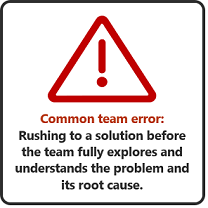Even well-planned studies may need to solve problems. Examples of such problems or challenges include:
- Changing circumstances. New laws, changes to policies or procedures at the research organization, or changes in team member availability due to personal circumstances can add new challenges to a study.
- Failure or unintended outcomes. Even well-planned strategies to recruit participants or collect data do not always work as intended. Failure is an opportunity to learn and improve.
- External events. Events such as environmental or natural disasters can affect the study timeline and how the team works together.
Sometimes, problems suggest that the team is not working well together. Examples include:
- Personal conflict. Sometimes team members may have a personal conflict with one another instead of engaging in productive disagreement. Personal conflict is based on a negative judgment of someone’s personal characteristics or work style rather than the person’s ideas and perspectives. Team members can reduce personal conflict when they recognize and address biases and stereotypes and commit to team norms of respect and collaboration.
- Limited productivity. Team productivity—the ability to make decisions and complete tasks as a team—can be affected by a lack of a shared vision or unclear roles and responsibilities. Limited productivity can also result from discussions that are not well-managed.
- Fading interest and involvement. Long periods of time between team meetings, limited involvement, or a lack of clarity about team member contributions can reduce team members’ interest in the study. Reduced interest often results in inconsistent attendance or participation.
Solving Problems and Challenges Can Lead to Innovations in Multi-Stakeholder Team Research.
Multi-stakeholder team research is relatively new. Understanding or reflecting on the challenges to effective multi-stakeholder teamwork can provide lessons that advance the field. The solutions that you and your team develop will be valuable to other multi-stakeholder research teams in the future.
Resources on Problem Solving
The following provide information and resources on how teams can solve two common issues collaboratively: personal conflict between team members and sustaining team member involvement in a study:
- Collaborative problem solving. Both leaders and contributors play an important role in solving problems. The process for team problem solving is easy to learn and apply to most situations.
- Negotiating conflict. Although disagreement can be a positive force that leads to team synergy (where decisions made by the entire team are stronger than those made by any one member), unmanaged conflict between team members can slow down progress and make a team less effective. Understanding personal conflict and how to resolve it is an essential skill for the entire team.
- Sustaining engagement. Even the most enthusiastic team members can lose interest and commitment to the team. Practical ways exist to ensure that team members stay involved throughout the entire study.

